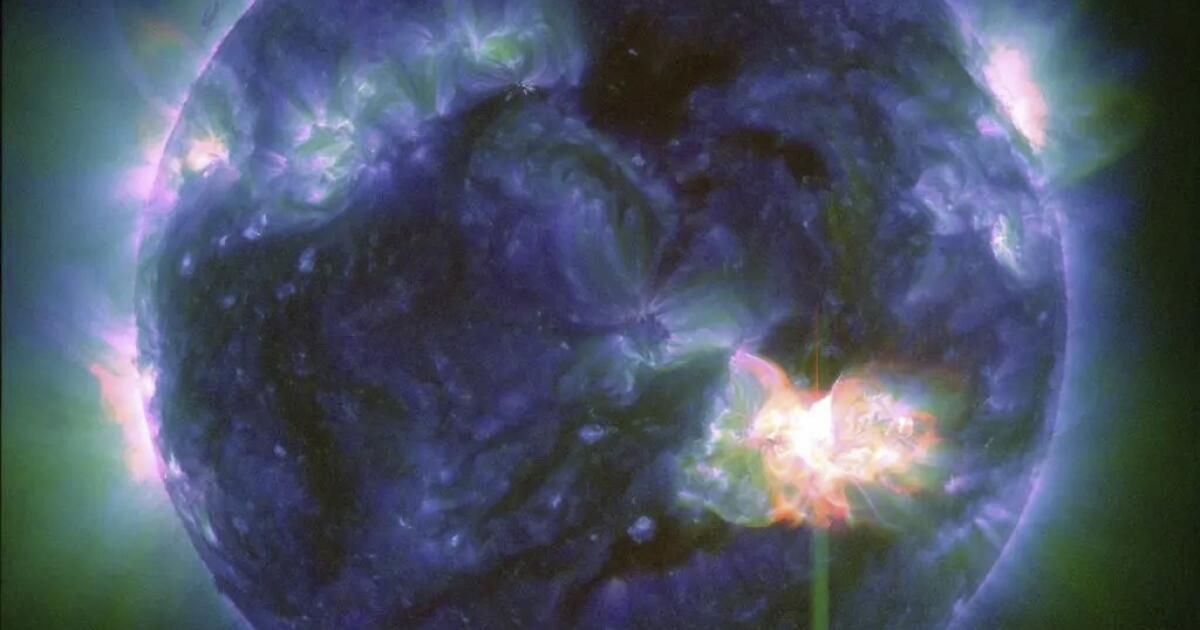A different type of storm could complicate this weekend's plans.
For the first time since January 2005, the US National Oceanic and Atmospheric Administration has issued a severe geomagnetic storm warning for Friday night.
The NOAA Space Weather Prediction Center's Category G4 clock signals the possibility that a concentration of energy from the Sun could disrupt our planet's electromagnetic field once it reaches Earth.
A geomagnetic storm of this size could disrupt communications, like the 2003 event that caused blackouts in Sweden and damaged South Africa's power grid.
What is more promising is that supercharged collisions of solar energy with the gas in our atmosphere create the dazzling phenomenon of Northern Lights, or the northern lights. The colorful display, normally limited to the polar regions, could be visible as far away as Northern California this weekend.
“We have a very rare event on our hands,” space weather forecaster Shawn Dahl of SWPC said during a news conference Friday morning.
A geomagnetic storm occurs when energy from the solar wind (the high-speed stream of atomic particles that the sun constantly launches into space) is transferred to the electromagnetic field surrounding Earth.
The winds of a category 5 hurricane on our small, insignificant planet can exceed 240 kilometers per hour. By contrast, the solar wind averages about 870,000 miles per hour all day, every day. according to nasa.
Earth's electromagnetic field diverts the majority of these particles, except for those interactions in the polar areas that produce the northern lights. But unusually intense or concentrated energy eruptions on the Sun's surface can upset that balance, triggering geomagnetic storms like the one potentially headed our way.
On Wednesday morning, astronomers observed a series of solar flares and coronal mass ejections (essentially giant bursts of energy) emanating from a massive sunspot more than 15 times the diameter of Earth.
The Space Weather Prediction Center has observed seven coronal mass ejections, or CMEs, heading in the direction of Earth, said Mike Bettwy, SWPC chief of operations.
“According to the data we have, all seven of them are going to throw that energy at us,” Bettwy said.
The energy from these various eruptions is expected to merge and reach the Earth's magnetic field Friday afternoon or early Saturday.
“Our confidence level is high that we will have the arrival of these CMEs as early as this afternoon,” Dahl said. The exact time they will arrive is less certain.
SPWC will have clearer information once solar power reaches NASA's Advanced Composition Explorer spacecraft, a satellite about 1 million miles from Earth.
However, “although it seems like it is very far away. . . it doesn’t necessarily give us much lead time,” Bettwy said. Since the solar wind moves faster than the speed of sound, it will reach Earth only 20 to 45 minutes after passing that 1 million mile mark in space.
Scientists have previously warned that the strongest geomagnetic storms could wreak havoc on our energy and communication systems. That is not what is expected in this case.
Those of us here on Earth may experience power outages and minor Internet or GPS failures, Bettwy said.
“Geomagnetic storms can affect infrastructure in near-Earth orbit and on the Earth's surface, potentially disrupting communications, the power grid, navigation, radio and satellite operations,” NOAA said in a statement. statement. “SWPC has notified the operators of these systems so they can take protective measures.”
Milder geomagnetic storm warnings are quite common. In March, a geomagnetic storm briefly reached G4 strength for a few hours.
That event was the third geomagnetic storm to reach G4 status during the current 11 year solar cyclewhich started in 2019, according the SWPC. At the time, the agency said the event posed no risk of adverse impacts to the public.
“What's unique about what's potentially about to hit us is that it's a much more significant event, in terms of what it's going to affect the atmosphere,” Bettwy said.












